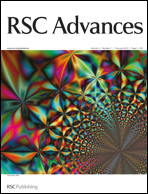The milk fat globule membrane (MFGM) is a complex soft matter system that encapsulates the milk fat globule (MFG). It is important for the successful delivery of nutrients for newborns and it is also increasingly studied for its potential pharmaceutical benefits. Yet, the persistence and integrity of the MFGM through many steps common in the processing of milk for consumption and cheese manufacture is not completely understood and is an area of ongoing interest. In this study, atomic force microscopy (AFM) was used to characterize the MFGM membrane interface to demonstrate the effects of mechanical force and shear encountered during milk processing. The results showed that significant differences can be observed and such a soft biological system with complex constituents can be quantitatively characterized using AFM. Major differences were observed in the surface morphology and the roughness of the MFGM in raw milk, raw ultra filtrate (UF) retentate, homogenized milk, cheese milk and cream samples. The MFGM of the homogenized fat globules showed the greatest difference in appearance when compared to the native raw MFGM from damage largely due to the homogenization process. In addition, AFM elasticity and thickness measurements of the MFGM showed quantitative differences between the five different samples with an increase in the stiffness of the MFGM of milk samples that have undergone more processing steps. The quantitative results of the physical nature of the MFGM from the AFM study, combined with the qualitative results on the chemical nature of the MFGM, demonstrate that AFM can aid in the understanding of the interfacial behaviour of complex soft matter systems where access to detailed chemical composition is limited.

You have access to this article
 Please wait while we load your content...
Something went wrong. Try again?
Please wait while we load your content...
Something went wrong. Try again?


 Please wait while we load your content...
Please wait while we load your content...